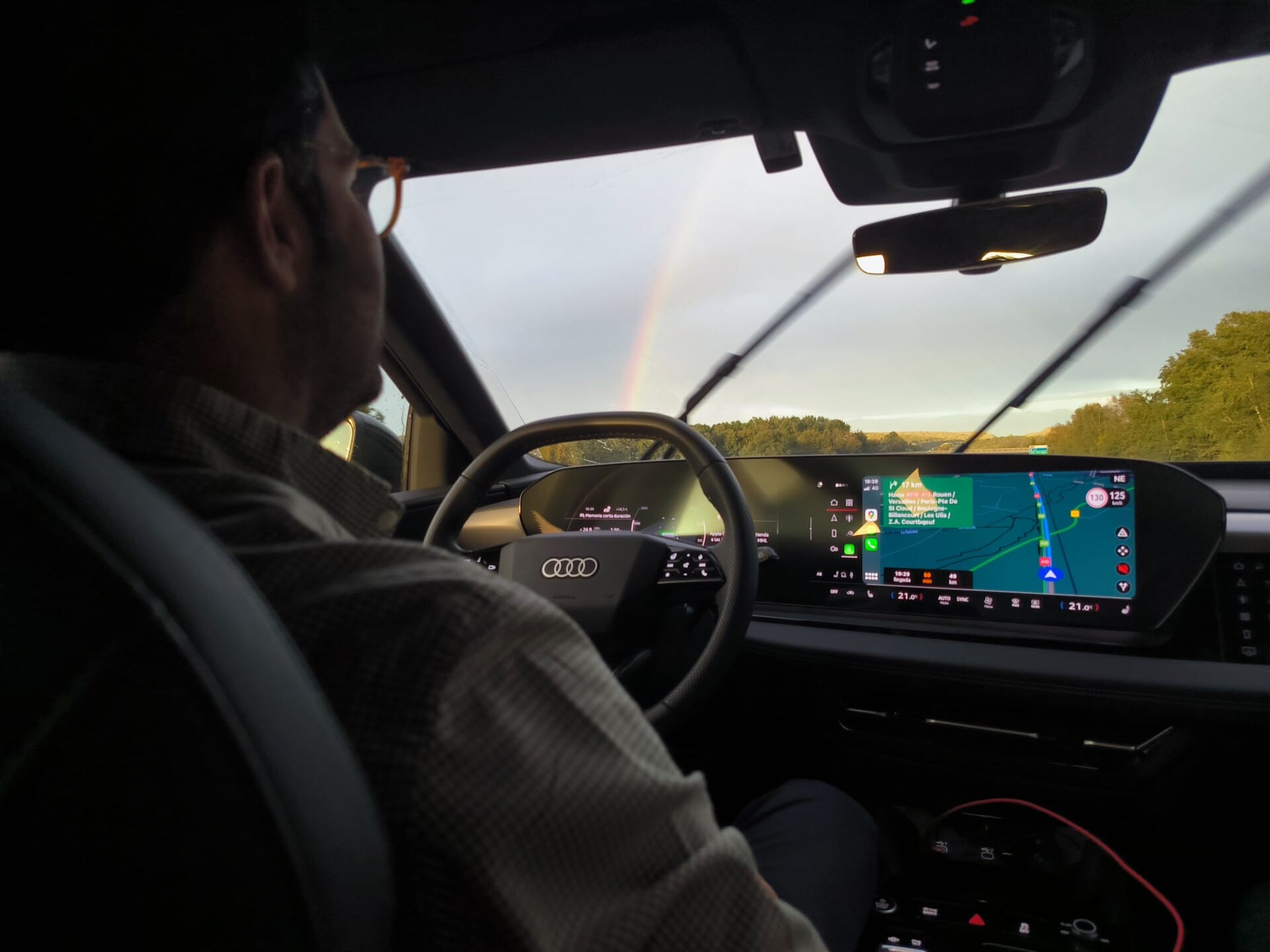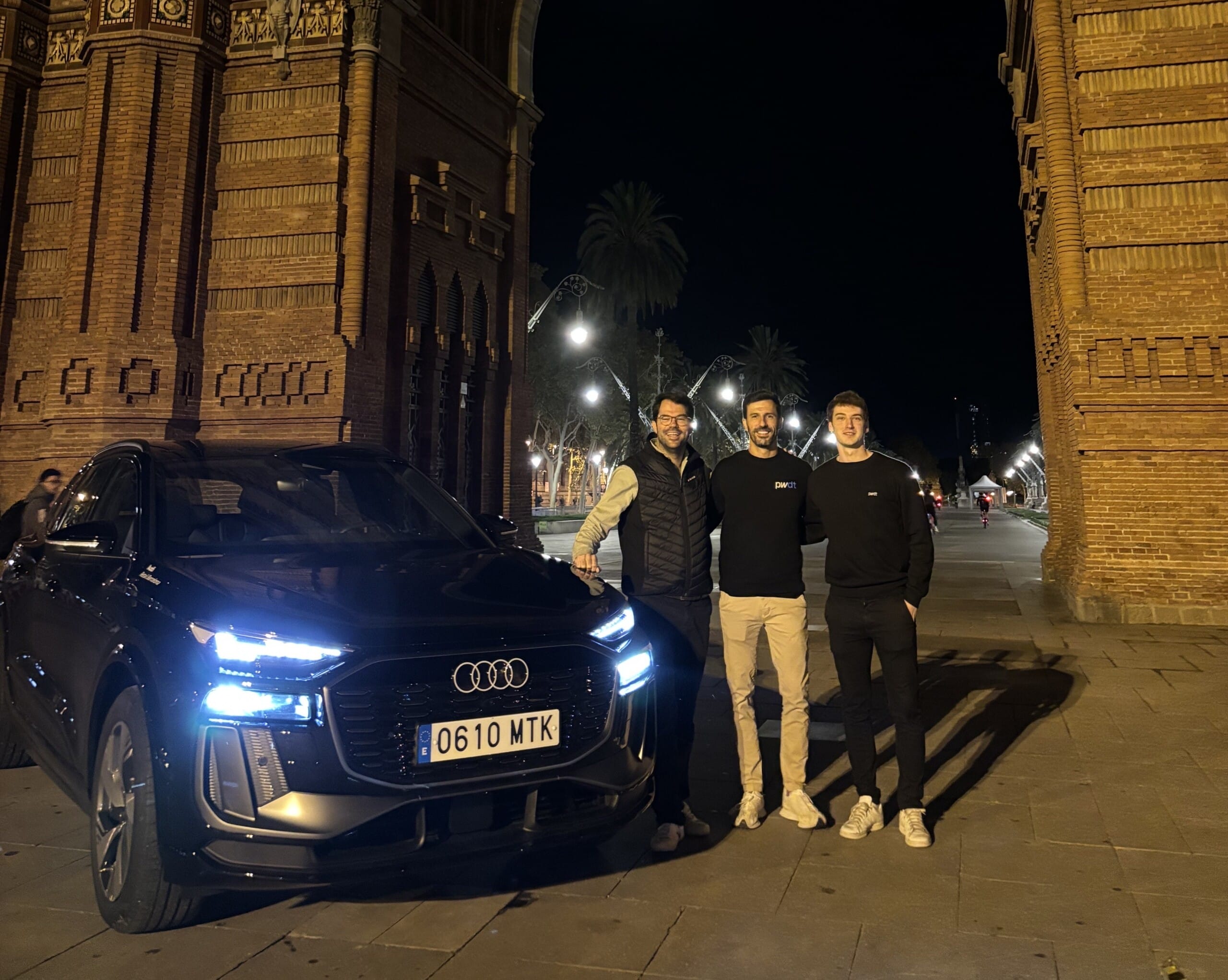
Breaking myths about e-journeys: Kempower teams up with Powerdot for 1034 km EV driving challenge from Barcelona to Paris
Kempower and Powerdot’s partnership has seen innovative, industry-leading fast charging technology come together with convenient destination charge points in over 1,700 locations and more than 4,800 live charging points across Europe, enabling EV drivers to recharge quickly without having to go out of their way.
To show how easy and practicable a long European EV journey can be with Powerdot’s vast network of charge sites, a team of Kempower and Powerdot EV experts set out to travel from Barcelona to Paris. Aside from enjoying some picturesque countryside views and great music, they were able to break some myths around e-journeys: they reported back that a European EV road trip is feasible, fun and potentially almost as fast as the same journey in an internal combustion engine (ICE) vehicle.
Infrastructure to tackle range anxiety head on
Around 4 in 5 prospective EV owners experience high levels of range anxiety, statistics show. Numerous EV brands have reported that it’s the single biggest barrier stopping people from making a purchase, so it’s unsurprising that long, cross-border journeys aren’t attempted by many EV drivers.
While charging infrastructure has taken some time to catch up with the high uptake of EVs, the EU has seen a fourfold increase in the number of DC charging points between 2021 and 2023, driven by new Alternative Fuels Infrastructure Regulation (AFIR) rules which legislated the mass installation of chargers in the region.
Ferran Menescal from Kempower’s Iberia sales team partnered with Carlos Alvarez and Cesar Ciaurriz from Powderdot to plan and execute the 12-hour voyage, which saw them travel 1034 km in an Audi Q6 E-tron.

Planning a long journey: Is it really so much harder for an EV?
Starting from the Arc de Triomf in Barcelona, the team set its sights on the Arc de Triomphe in Paris and three checkpoints where they could stop off and recharge along the way. With almost 400 total charging locations situated along the main route between the two cities, the team wasn’t short of options, but ultimately decided to make stops at some of Powerdot’s aptly-located charge points in Ibis Perpignan, Intermarché Massiac and Leon de Bruxelles Bourges in France. The charging locations are conveniently located at restaurants, supermarkets and hotels, meaning the charging could coincide with the group’s plans to eat, shop and refresh.
These stops are equipped with Kempower’s rapid DC charging satellites which allow drivers to recharge in as little as 30 minutes using up to 200 kW of power. The satellites are designed to share power dynamically between the cars which are connected to the charging system, meaning that charging times are optimized and the team could get back on the road quickly. In addition, Powerdot stations have multiple payment methods such as payment terminals, QR code and are also integrated with all electric mobility applications (eMSP), providing a truly convenient user experience.
Ferran said: “Like any driver, we made sure to do our research before setting off on such a big trip. It turned out that charging was widely available along the entire route and there were no major stretches where we couldn’t have stopped off to charge if we’d needed to.”
He continued: “Pre-planning for long car journeys is and should remain an important task, whether you’re driving an EV or not. However, growing EV infrastructure across Europe is a sure sign that range anxiety will become a thing of the past and EV drivers will be able to embark on road trips just as easily as they ever have before.”
You can watch the journey in three minutes here:
Fast charging will make EV road trips the new normal
The team spent a total of 2 hours at charging points throughout the trip, using the time to stretch their legs, use the restroom, grab a coffee or a bite to eat at Powerdot’s destination hubs. This is far less time than if they had used AC chargers instead of rapid DC chargers and could even be roughly the same as a similar journey in a traditional ICE vehicle, given many of these passengers still opt to make longer stops of 30-60 minutes to eat, rest and refuel.
The dynamic fast charging capabilities of the Kempower satellites used meant the team could quickly resume the long journey without having to incur additional delays. Meanwhile, the proximity of the charging points to shops and restaurants meant that the charging time could be spent taking a well-earned refreshment break.
Carlos, Senior Operations Manager at Powerdot Spain commented: “There were lots of charging options close to our route which gave us the opportunity to eat, shop or enjoy a coffee. Much like the car, we felt the need to recharge our own batteries after a long stretch of driving, so we also took full advantage of the opportunity to rest. On a mammoth journey like this, charging stops go hand in hand with the natural rest stops drivers need to take anyway so we didn’t see them as an inconvenience.”
Cesar, Powerdot’s Running Operations Coordinator, added: “The drive was a valuable opportunity for us to experience firsthand the current state of EV charging in the region and it was clear to us that the outlook is really positive. Support, investment and legislative bodies such as AFIR will continue to be vital in pushing the rollout of EV infrastructure in Europe and, with time, the public will feel confident in the progress that has been made to empower them to be EV owners too.”






